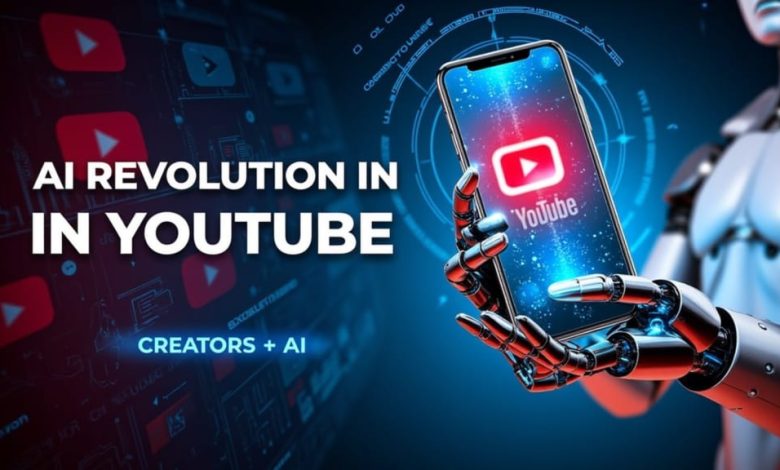
Artificial intelligence (AI) has revolutionized nearly every aspect of digital creativity, and video production is among the most profoundly impacted fields. What once required an entire studio team of editors, animators, voice actors, and sound designers can now be executed in minutes through advanced AI-driven tools. These modern systems don’t just automate the process—they understand creative intent. With the ability to interpret text prompts, analyze visual context, and synthesize realistic scenes complete with synchronized sound and effects, AI has become the silent co-director behind a new era of storytelling.
The Shift Toward Automation
In the past, video creation was a time-consuming process involving multiple stages—scriptwriting, storyboarding, shooting, editing, and rendering. Each phase demanded specialized skills and expensive software. Now, with the rise of multimodal AI, creators can simply describe a scene in natural language and watch it materialize almost instantly. For example, an input like “a sunrise over the Sydney Opera House with calm background music” can generate a cinematic clip with realistic lighting, motion, and sound that mirrors professional-grade production.
AI video systems trained on massive visual-language datasets are capable of understanding tone, pacing, and artistic nuance. This means the results can be surprisingly close to human-directed outputs—sometimes even surpassing them in efficiency and visual coherence. Automation not only reduces time and cost but also allows creators to iterate ideas faster, experiment with styles, and push the limits of imagination.
Applications Across Industries
AI-generated video is no longer confined to social media content or experimental projects—it’s finding real-world applications across diverse industries.
In marketing and advertising, brands use AI to produce product demos, explainer videos, and personalized campaigns at scale. AI tools can generate multiple variations of a single advertisement tailored to specific demographics, increasing engagement and ROI without requiring new shoots.
In education and training, AI-powered platforms simplify e-learning by turning lesson scripts into engaging visuals with animated characters and voiceovers. This not only saves time for educators but also enhances student engagement by converting complex topics into digestible, visual narratives.
In journalism and media, newsrooms experiment with automated visuals to accompany data-driven stories. AI can transform raw statistics or reports into interactive videos, bringing abstract numbers to life. This innovation helps audiences better understand complex subjects such as climate change, finance, or political trends.
Meanwhile, entertainment industries are using AI for pre-visualization, virtual production, and even full-length short films. From deepfake-based actors to AI-assisted animation, the boundaries between real and synthetic creativity are rapidly dissolving.
Balancing Creativity and Ethics
Despite its benefits, AI video creation presents several ethical and creative dilemmas. The growing reliance on algorithms raises questions about originality and artistic integrity. If an AI model trained on existing films generates new scenes, who owns the copyright? The creator who wrote the prompt or the developers who trained the model?
Moreover, AI systems can inherit biases present in their training data, resulting in skewed representation or cultural insensitivity. Transparency in data sources and model training becomes crucial to ensure fairness and accountability. There’s also a moral imperative to distinguish between synthetic and authentic media—particularly in journalism and political communication—where misinformation can have serious consequences.
As AI continues to influence the creative process, striking a balance between automation and human imagination is essential. True innovation will emerge when humans use AI not as a replacement but as a partner that amplifies creativity.
The Emerging Ecosystem
Tools such as Vora Video AI exemplify the evolution of this creative ecosystem. These platforms demonstrate how far multimodal AI has progressed—from interpreting text and static images to generating moving, emotionally resonant sequences. They combine computer vision, natural language processing, and generative modeling to simulate real-world cinematography.
Beyond Vora, several other AI tools—like Runway ML, Pika Labs, and Synthesia—showcase different approaches to intelligent video generation. Runway ML focuses on creative post-production and green-screen effects, while Synthesia allows businesses to create realistic talking-head videos without actors or cameras. Each tool represents a step toward democratizing filmmaking, making professional-quality production accessible to individuals and small teams who previously lacked the resources.
This emerging ecosystem has created a ripple effect across industries. Video editors are learning to prompt AI efficiently, marketers are discovering new storytelling formats, and even musicians are using generative visuals to complement their soundtracks. The creative process is no longer linear—it’s dynamic, iterative, and increasingly collaborative between human and machine.
Looking Ahead
The next phase of AI-driven video creation promises even greater transformation. Experts predict that within a few years, generative systems will be capable of producing long-form narratives such as documentaries, short films, and interactive experiences in real-time. Integration with augmented reality (AR) and virtual reality (VR) will further blur the line between physical and digital worlds, allowing audiences to participate directly in immersive storytelling.
Real-time rendering and adaptive content generation will enable personalized viewing experiences—where the storyline, visuals, or pacing can adjust dynamically based on user reactions or preferences. This convergence of AI and creativity could redefine entertainment, education, and communication altogether.
Yet, amid this evolution, one truth remains constant: human creativity will continue to guide the direction of these tools. AI can generate images and scripts, but it lacks emotion, intuition, and context—the uniquely human qualities that make stories meaningful. The future of video creation, therefore, is not man versus machine but rather man with machine, shaping new frontiers of artistic expression together.

